Transitioning After 40: My 3 Big Changes by Victoria Katherina Iglesias
by GenderGP | Dec 9, 2021 | Trans Man , Trans Woman

My name is Victoria. I’m 40-something years old, and this is my story about my MTF transition after 40.
While the journey to my true self wasn’t easy, the end result proved to be well worth it.
*Please note: We use terminology like AMAB (assigned male at birth), MtF (male-to-female), and trans-feminine interchangeably for understanding across all age groups, cultures, genders, and identities. For more information. check out our glossary of terms .

My Struggles and the Challenges I Had to Face
I was born in Spain, but when the economic crisis struck again, I, like many others, relocated to Germany. It was a land of abundance, but it wasn’t only about jobs in my situation.
In Spain, unemployment among transgender people has reached an all-time high of 85 percent , forcing the majority of us to choose between hiding our gender identity or turning to prostitution to make a living.
MTF Transitioning After 40: Finding a new safe space.
Despite hosting Europe’s largest Pride Parade, Spain is not a safe haven for the LGBTQIA+ community. Bullying, political prosecution, and various forms of aggression are the icing on the hatred cake, making life as a trans person in Spain a heroic feat—despite the efforts of LGBTQIA+ organisations.
When I finally chose to follow my heart and live my life, I encountered numerous difficulties in Germany. People aren’t eager to speak with you; they’re more tolerant than pleasant, which isn’t necessarily a negative thing. However, there are many glass ceilings to break, beginning with your health insurance.
“You’re Not Trans Enough”
I was determined to live my life as my true self and sought medical care right away. I started by scheduling my first appointments at the local hospital. There, they referred me to psychiatrists. After a few sessions, I was told “I wasn’t trans enough” to begin treatment.
It appears that health insurance companies don’t mind taking a big piece of your paycheck each month, but spending it on “expensive procedures that last a lifetime” is an expense they’d rather avoid.
Taking Matters Into My Own Hands to Transition After 40
Mtf transitioning after 40: self-meding with birth control.
I was disappointed, to say the least. Although I believed there was nothing I could do, I was never willing to give up. I was determined to do what I could.
I went to several treatment sessions. After being repeatedly denied for MTF HRT, I began to use birth control pills as a substitute. I could buy the pills in Spain without a prescription. I would take two pills per day and stockpile enough to last a year.
There was no medical follow-up, nothing. I knew this wasn’t how the medical community should handle an older MTF transition—let alone any transition. It carries many risks, but I felt my back was up against a wall.
When the Pandemic Struck, Everything Changed
After spending so much time in the closet, I finally began to come out. I told my friends first, then some of my colleagues. I’d spend the holidays in Spain and return with my pill supply. That is until COVID-19 took centre stage.
It turned out to be a disaster. With travel restrictions in place, I ran out of birth control pills and had no means of replenishing my supply.
My Introduction to GenderGP
I’m fortunate to have wonderful friends all over the world. My friend Cara told me about an organisation called “GenderGP” during one of my numerous visits to Manchester’s Sparkle.
GenderGP helped her as she began her journey. She told me of their work not only with HRT but also with therapy—something I had been avoiding for so long! As I took my last pill, I began to look into what they had to offer. It turned out that I had been missing out on a lot of help.
Making a Promise to Myself to Transition After 40—and Keeping It
I sch eduled my first appointment for December 31, 2020.
This time, I vowed to do my proper and well-deserved MTF transition after 40.

Suddenly, everything hit me all at once.
“What should I do if I’m not accepted?”
“What should I do if I am?”
This was a huge step for me.
I’m going to be able to live my life the way I want to, but I won’t be able to disguise it as I have been. It was surely a time of uncertainty, hesitancy, and fear about the future.
Nevertheless, since that first interview with GenderGP, everything has been a lot easier and more comfortable than it had been.
GenderGP has been taking care of me for nearly a year— as a human being, not as a member with a membership number. They’ve helped me with counselling (therapy), medical advice, HRT access, health report follow-up, and lab tests.
- Transitioning in Older Age
- Where are all the older trans men?
GenderGP Made a Big Difference in My L ife to help me Transition After 40
GenderGP offers excellent help. They can’t, however, do things for you. You have to define and create your transition the way you want it to be.
Please keep in mind that you cannot sit back and relax while someone else takes over and serves it to you on a silver platter.
You can transform your life by taking that step, becoming a member of the community, and protecting your physical and mental health. All you need to do is devote yourself to the process.
In some sense, HRT appears to be a significant deal for all of us. After a period, the results begin to emerge. Please be aware there is no instant Cinderella magic.
It does, however, work. And everyone will notice the changes.
MTF Transitioning After 40: My New Lease on Life
Last summer was a bumpy ride. After two years of isolation, I was finally reunited with my family in Spain. They noticed “things,” such as new hairstyles, French manicures, and a nicer figure. And, yes, tiny breasts. But they said nothing, and I returned to Germany.
I also met my current girlfriend and spent a few days on the beach in bikinis and swimsuits. Yes, I improved my physical and mental health to the point that I could finally wear revealing clothing in public.
These two events made me reconsider my future.
From there, it was a cascade of events, and I made the following three big changes:
One: I eventually started to see my true self. I am strong and beginning to look like I always wanted to.
Two: I’ve lost around 1.5 stone. I eat better, exercise, and pamper myself. I read about how to improve my mental health. Since I live alone and my closest friend is hours away by plane, this is an important issue for me. That may appear good, but I am saving the best for last.
Three: I needed to do something to finally close the circle, and since August 20, 2021:
- I moved to a nicer, larger apartment in an area where everyone knows who I am, accepts me, and even supports me. The people in my building are amazing.
- I quit my previous job, where I only came out to a few people.
- I got a new job. My badge says Ms. Victoria Iglesias, Software Engineer, despite using my legal name on the papers, as I haven’t changed it yet. I am the firm’s first transgender employee and the first transgender person to apply for a job there.
- I finally told my parents about my transition, which terrified me initially. I discovered they already “kind of knew” and are proud of me and my courage. They are very supportive because I am happier than I have ever been.
Honoured to Be a Member of the GenderGP Family, They Helped My Transition After 40
Without a doubt, I was able to accomplish a lot on my own. I didn’t expect GenderGP to take care of everything for me. Being a part of that community while being supported and helped by such a wonderful, engaged, and committed group of people, has made everything easier.
In recent months, I’ve recommended GenderGP to other people I’ve met who, like myself, struggled to start, continue, or resume their transition during the pandemic. This organisation does help, and they provide the support lacking elsewhere when it’s needed the most.
If you’re ready to start hormone therapy to swap your hormone profile so it matches your gender identity (rather than the sex you were assigned at birth), click here to find out more.
Looking for something?
Recent posts.
- A message from us to you…
- Response to the Cass Review
- A Response to NHS England’s Ban on Puberty Blockers for Trans Youth
- Sweden Healthcare Update
- Message from Dr Webberley – We stand with WPATH

- HISTORY & CULTURE
‘This is me, as I am’: A photographer documents her own gender transition
In 2015, Allison Lippy realized who she had always been—and turned her camera on herself to understand her journey as a transgender woman.
It took 27 years for me to realize I was transgender. It took a month or two to decide to physically transition. It took even less time than that to understand that I should document my transformation—for myself and for anyone else who needs to see it.
I should start at the beginning.

Growing up in Baltimore in the 1990s and early 2000s, I wasn’t aware that people could be anything other than the gender they were assigned at birth. There weren't resources or role models available to me at that point to even begin to understand who I was.
However, there were little hints of my queerness, a feeling of being different, something intangible. I never shared nor had the opportunity to explore those feelings until my early 20s. When I was 21, I came across videos of trans women on YouTube talking about their transitions. I would return to the videos periodically to see their updates, which intrigued me. I was telling myself that this was just research for a story that I wanted to do on trans identity. I wasn’t yet ready to confront the truth about myself.

I moved to New York City in 2011. Keeping my mind and body occupied by working in the photo industry distracted me from introspection. In 2015, I was sitting in my therapist’s office when she casually mentioned a person—a celebrity—who had come out as trans. I don’t remember what the context of that conversation was. I don’t think I was even paying particular attention to what she was saying. But I remember thinking, ‘Oh, that’s interesting.’
That throwaway comment was the spark that forced me to stop ignoring what had been burning in my subconscious. When I was at home, alone with my thoughts, I pondered my identity. Asking myself over and over again, ‘Am I trans? Am I a woman?’ I told myself probably not. Then I thought, ‘Maybe?’ I went back and forth, but as the days and then weeks progressed, the answer became clear: ‘Yup, that’s you.’
Finally, I realized I needed to accept who I was.

All the confusion I’d felt made sense; all the puzzle pieces fit for the first time. Everything just fell right into place. Confident and excited, I started moving quickly to make up for lost time.
I came out to my therapist first, just to test the waters, and then to my mother, who gladly was my rock throughout my transition. I’m fortunate that everybody in my life—including my parents, brother and friends—was really accepting.

Fundamentally, I owe my very existence to my trans elders, especially queer Indigenous, Black, Asian, Latinx, and POC people. They were in the streets and in our communities doing the hard work,paving the way for the rest of us to discover and live authentically as ourselves. Trailblazers, like Marsha P. Johnson, Sylvia Rivera, and countless others , stood up and fought for our community in a time when visibility and representation were next to none.
Within a few months of coming out, I started taking hormones—and I began making self-portraits. Turning the camera on myself was a way to understand where I started and where I would end up. As a photographer and someone who didn’t encounter positive images of trans people as a kid, I felt I had a responsibility to tell my story through my own queer perspective.

I don’t intend to be representative of all trans people. Just as there isn’t one way to be human—there isn’t one right way or one wrong way to transition. We each have our own path.
My path happened to be a medical transition. In 2016, I went through facial feminization and gender reassignment surgeries. The facial feminization surgery reconstructed my skull, shaving bone to remove the effects of testosterone. While this might seem extreme, imagine discovering who you truly are and then looking in the mirror and seeing someone else. The surgeries were painful, but the journey to be yourself always includes some pain, sometimes mentally and physically.
It’s difficult to look back at old family photos now. I wish I could have been me earlier. But when I look at photos from early in this project, I see a person who is on a journey to being their true self. And toward the end of the series, there’s a few images where I think: ‘This is me, as I am. I have zero regrets.’
For Hungry Minds
Related topics.
- SEXUAL ORIENTATION
You May Also Like

A 'women-only' village? The truth is much more complex—and fascinating

Barbie’s signature pink may be Earth’s oldest color. Here’s how it took over the world.

See Sally Ride’s boundary-breaking life in photos

What was the Stonewall uprising?

Meet the 5 iconic women being honored on new quarters in 2024
- Environment
History & Culture
- History Magazine
- History & Culture
- Mind, Body, Wonder
- Paid Content
- Terms of Use
- Privacy Policy
- Your US State Privacy Rights
- Children's Online Privacy Policy
- Interest-Based Ads
- About Nielsen Measurement
- Do Not Sell or Share My Personal Information
- Nat Geo Home
- Attend a Live Event
- Book a Trip
- Inspire Your Kids
- Shop Nat Geo
- Visit the D.C. Museum
- Learn About Our Impact
- Support Our Mission
- Advertise With Us
- Customer Service
- Renew Subscription
- Manage Your Subscription
- Work at Nat Geo
- Sign Up for Our Newsletters
- Contribute to Protect the Planet
Copyright © 1996-2015 National Geographic Society Copyright © 2015-2024 National Geographic Partners, LLC. All rights reserved

My Transgender Journey
Saying goodbye to the traditional icons of femininity and masculinity along the way | by tawni sofia.
A (transgender/gender) transition can be exciting but certainly fraught with many challenges for anyone, at any age. Transitioning involves a healthy dose of introspection; it often requires one to learn self-acceptance, to reconcile one’s sexuality, and to understand more fully the gender that one is transitioning to. Heightening one’s self-awareness of personal strengths and weaknesses is key. Simultaneously, there are a host of external aspects one must traverse, as well: doctors, psychotherapy, speech therapy, coming out to family and friends, work, religion, day-in-day-out presentation, possible surgeries, personal finances and much more. Addressing a single one of these internal or external issues would be quite a significant undertaking, yet the dynamics of a transition force a person to cope with all of them at once — and many can pop up, recede, and then come back to haunt one as the ghost of one’s transition past.
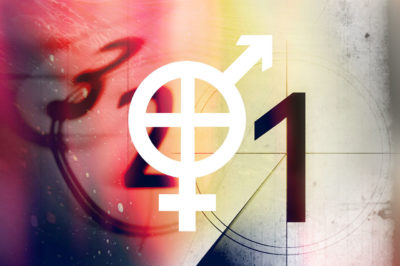
As a guy, I had a very strong tendency to feel and express basic emotions and thoughts that were interpreted as feminine, soft, kind, empathetic, tender and more. Sounds wonderful, right? Well, I was anything but an “alpha dude.” At a young age, I learned — via the worst ways possible — to keep these feelings in check by adopting a more credible “real dude” presence as a means of simple survival and as a means to be able to advance and navigate through the world, as I knew it at that time.
During my youth, screen idols reinforced the notions of masculinity much more so than those of today. For many, including myself, the example of cowboy John Wayne and several other strong, independent, take-charge, alpha-male types (Charles Bronson, Yule Brenner, Clint Eastwood, Steve McQueen, Charlton Heston, etc.) were ever present on the silver screen. They were towering figures of masculinity (hello, white knights!) who never showed weakness. They were full of supreme certainty and, of course, they always won in the end.
The female stars of my youth boldly represented the other end of the gender spectrum. For me, Marilyn Monroe embodied femininity the most: the iconic scene from The Seven Year Itch with air blowing up her white dress on the sidewalk and her rendition of “Happy Birthday,” sung to then president John F. Kennedy in the sultriest voice, we forever engrained in the National — in my — conscience. Other models of femininity included Bridget Bardot, Sofia Loren, Goldie Hawn, Lynda Carter and many more. They were soft, sexy, vulnerable, provocative, and gentle whose charms could leave men without words or other thoughts.
As I navigate the progression of my transition, I find myself re-encountering and challenging my own errant thoughts and desires, thinking for both genders. At this point in my life, I know the archetypes on the silver screen are simply interpretations of great cinema (of course!), yet time after time, I find myself confronting those exaggerated, perhaps misinformed, representations of masculinity and femininity.
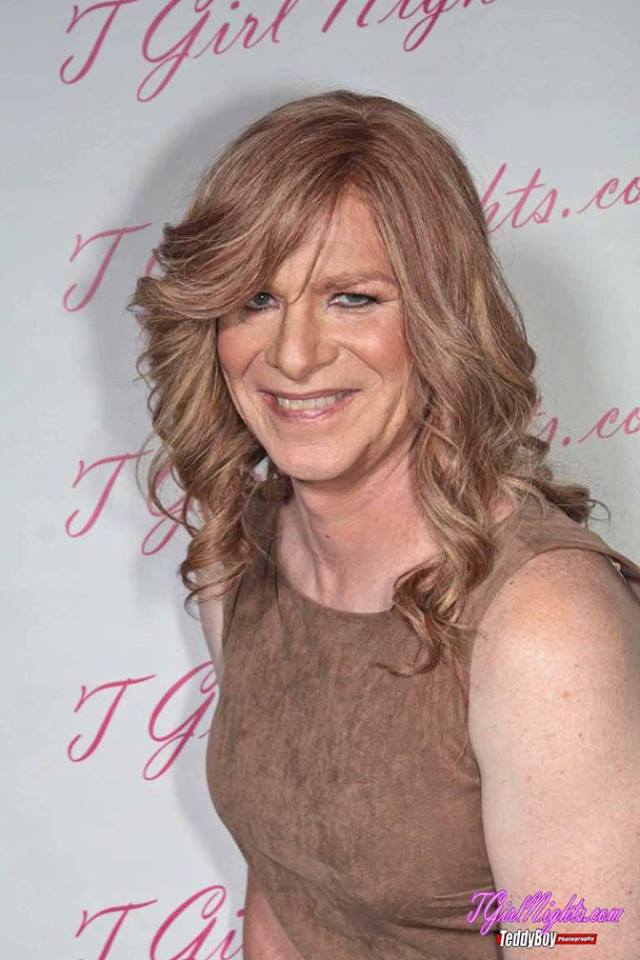
She was there during some very intense moments. She listened to things that I had never expressed to anyone, when I felt the ghosts of my false idols haunt me once again. The engrained voice and identity of masculinity said that I shouldn’t burden my friend, that I had to solve my own problems and not be a bother to anyone (flashback: the proverbial John Wayne getting up that horse, saying “Woman, its Gettin’ Time”).
Little by little, I’m letting that side of me — with all of its false assumptions — ride into the sunset. It finally began to dawn on me that all of this is fine and that all of this is part and parcel of embracing the budding feminine emotion that had been fermenting inside of me. I’m now experiencing a push and pull of vulnerable emotions with a degree of profundity that I’ve never encountered, nor would have I expected.
Many of these emotions are things that, as a “guy,” I once derided or interpreted as a pain to listen to, ridiculous, or even stupid (“Why can’t a woman be more like a man” sung by a chorus from My Fair Lady). Yes, I am stuck on cinematic imagery . But now, I actually enjoy living and feeling those said emotions. Oh how profound, contradictory and complex!
Throughout this journey, I find both an acknowledgement and understanding my cisgender female friends in a very wonderful way. I tend to think of it as an emotional closeness that men don’t express or experience. I’m experiencing an inner wellbeing that I did not have prior to my transition, saying adios (ok, “hasta la vista”) to many of the false icons of both genders (yes, that includes you, John Wayne). I truly enjoy, with a sense of wonder, frustration and, even doubt, all of the emotional complexity. For me it’s a healthiness of my own natural feminine expression and progression.
Oh dear, will I be in “a league of my own”? There is crying in this league.
Yours in health and complexity, Tawni Sofia
Share this page via social media or email?
**In accordance with the Federal No Surprises Act, enacted January 2022, clients and prospective clients of GWLA may be supplied a Good Faith Estimate upon request.
Quick Links
Subscribe to the gwla newsletter.
© Copyright 2023 • All Rights Reserved • This website is wholly-owned by Casey Weitzman, LMFT, Family & Gender Therapy, APC
- Stories & Conversations
- Transgender
- My Story: Ex...
My Story: Experiencing Changes After My Transition
By Amy Agigian
By Amy Agigian — August 24, 2022
MB shares some of the physical changes she has gone through since the beginning of her transition. She also describes how she felt after starting hormones.
Transcript: OBOS Today: I was also wondering if you could talk a little bit more about—or like, about your experience physically transitioning, just in general, I guess?
MB: Totally. Yeah, so I have been on spironolactone and estradiol for about a year and a half now, a little bit longer. And I’m so glad I went on hormones. I was really scared of going on hormones. I was scared of like—I think a lot of trans people that I know, when they’re first going on hormones, they’re scared of, like, having an unsuccessful transition in some way or, like, not getting the changes that they want, or feeling like they will end up stuck in this, like, scary in-between place. Not in the sense of like nonbinary-ness or, like, gender nonconforming identities, but—I don’t know.
I think I also had a lot of, like, internalized transphobia when I was first transitioning— that I’m still working through, that made me really scared to go on hormones, but being on hormones, I’m so glad that I did.
I have— I am still very much the presidentrix-in-chief of the itty bitty titty committee, but I do have titties, which is great. [ laughs ] Like, breast growth, I think definitely it took a while and I had to go on, like, sublingual estrogen, which if, if this goes on any website anywhere, my one piece of advice to any transfems who are thinking of going on hormones is to get sublingual estrogen, don’t do a pill, like an oral pill. Get the one that goes under your tongue because it works a lot better. It works a lot faster.
One of the craziest physical changes that I didn’t know could happen is I get period cramps now, like monthly. And there hasn’t been a lot of, like, research into this, but there’s a lot of personal accounts of, like, trans women who say, like, usually— or not usually, but sometimes for trans women who have been on hormones, and on a certain level of, like, a certain dose of hormones, for more than six months, a portion of those trans women will start to experience, like, a cycle.
And obviously— So I’m not, I’m not getting my period, but I call it my period, because it’s like trans period and I also cry a lot more when I’m on it.
And it basically, it’s just like, it’s just cramps, but it’s not like—at first, I was like, is this a stomachache? But it’s not, it’s something else. I don’t know [ laughs ], I don’t know how it compares to, like, cramps for AFAB people, but yeah, it’s wild. It’s been a wild ride.
Also, I’ve never wanted babies before and now I want a baby really, really bad since being on hormones, and I cry so much more, and I’m so glad that I cry so much more, because it feels so good to just, to just sob openly in the streets of Providence, Rhode Island, constantly.
It’s fantastic [ laughs ].
OBOS Today: [ laughs ] That sounds like fun.
MB: [ laughs ] I’m serious. I love, I love crying. I love crying. It’s so—yeah.
OBOS Today: Honestly, same.
OBOS Today: Like genuinely, same. The amount of times I’ve just, like, like I have, like, at Wesleyan there’s just, like, all the different places on campus that I’ve just, like, publicly cried.
MB: Totally. I feel like I remember, like, me, you, and Molly, like, I don’t know. [ laughs I feel like there were times that I would just, like, walk up to Molly and she would just, like, [ laughs ] start crying out of nowhere in, like, physics or whatever. I don’t know, but I—yeah, I love, I love to cry.

- Privacy Overview
- Strictly Necessary Cookies
This website uses cookies so that we can provide you with the best user experience possible. Cookie information is stored in your browser and performs functions such as recognising you when you return to our website and helping our team to understand which sections of the website you find most interesting and useful.
Strictly Necessary Cookie should be enabled at all times so that we can save your preferences for cookie settings.
If you disable this cookie, we will not be able to save your preferences. This means that every time you visit this website you will need to enable or disable cookies again.

Preparing for Gender Transition: A Comprehensive Guide for Male-to-Female and Transfeminine Individuals
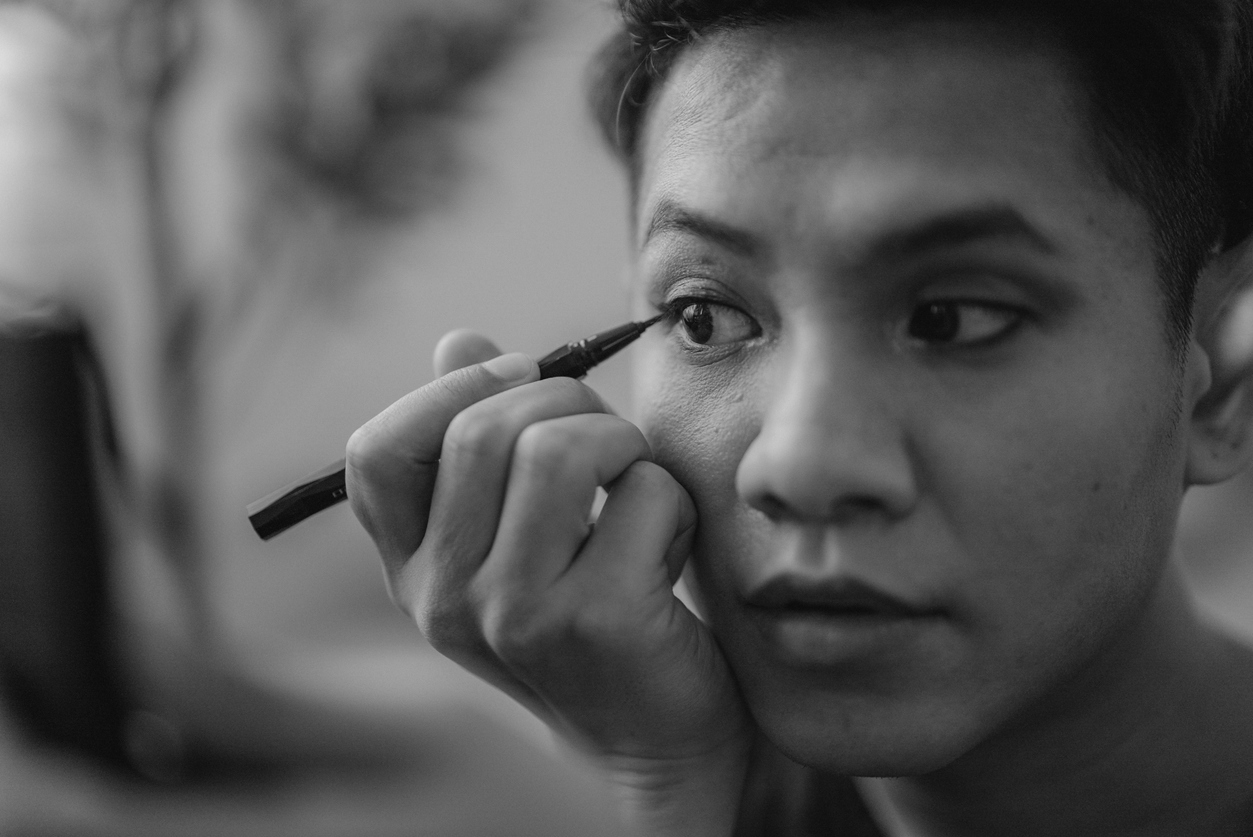
Embarking on a gender transition journey is a significant and transformative experience that can align your identity with your true self. Transitioning is a deeply personal process, and your experience is unique. It encompasses various aspects of your life, including social, emotional, and physical growth and change. To navigate this journey successfully, it’s essential to prepare mentally, emotionally, and physically for the challenges and rewards that lie ahead.
Recognizing that your gender transition journey is different from anyone else’s, this blog post aims to provide valuable information and resources when you’re considering social or medical aspects of male-to-female or feminizing gender transition. I understand that you have your own story, and I want to make it clear that there is no one-size-fits-all approach to gender transitioning. However, I hope this comprehensive guide will serve as an inspiration or, perhaps, a starting point that offers helpful insights to you as you begin to explore the possibility of male-to-female or transfeminine gender transition for yourself.
Throughout this guide, I’ll introduce various topics, including understanding gender transition, building a support system, social and medical aspects of transitioning, legal and practical considerations, mental health and emotional well-being, and additional resources for further information. My goal is to empower you to make informed decisions, embrace self-acceptance, and ultimately embark on a journey that leads to a more authentic and fulfilling life.
Understanding Gender Transition
Gender transition is a multifaceted process that involves aligning one’s gender expression, identity, and physical characteristics with your true self. This journey varies greatly between individuals, as it depends on their personal goals, circumstances, and preferences. To better understand the process, it’s essential to explore the different aspects of transitioning and recognize the importance of self-discovery and self-acceptance. Let’s start with a definition.
Gender transition refers to the steps a person takes to live their lives according to their gender identity , rather than the sex assigned at birth. It may involve social, emotional, medical, and legal aspects, each contributing to a more congruent and authentic existence. While every person’s journey is unique, the ultimate goal of gender transition is to create a life that is in harmony with your true self. Transition a process. It can also be a state of mind.
There are two primary aspects of gender transition: social and medical. Social transition involves the changes you make in your social and personal lives to express your gender identity more accurately. This may include adopting a new name and pronouns, changing your wardrobe, grooming habits, and voice, as well as coming out to friends, family, and colleagues. Social transition is highly individualized, and each person decides how and when to make these changes based on their comfort and circumstances. Medical transition, on the other hand, refers to the medical interventions you may pursue to modify your physical characteristics and align them with your gender identity. This can include hormone replacement therapy (HRT), which helps develop secondary sex characteristics that align with one’s gender identity, and gender-affirming surgeries, which can involve facial feminization, breast augmentation, and genital surgery. It’s important to note that not all transgender individuals choose to undergo medical transition, and the decision to do so is highly personal.
One of the critical aspects of a successful gender transition is the journey of self-discovery and self-acceptance. Understanding and embracing your gender identity is a vital part of building a life that is congruent with your felt sense. This process often involves introspection, exploration, and self-awareness. It is essential to create a safe space for yourself, where feelings and experiences can be expressed, examined, and validated without judgment. Embracing self-acceptance and self-compassion can help you navigate the challenges and triumphs of the gender transition process with resilience and confidence.
Building a Support System
Embarking on a gender transition journey can be both an emotionally challenging and rewarding experience. To navigate this path successfully, it’s crucial to have a strong support system in place. This network of supportive individuals can provide encouragement, understanding, and guidance during both the highs and lows of the journey. In this section, we’ll explore the importance of having a support network and how to find and cultivate your network of care.
A strong support network is essential for several reasons.
- Emotional support : Transitioning can evoke a wide range of emotions, from joy and excitement to fear and uncertainty. A supportive network can provide a safe space for sharing these emotions and help in processing them.
- Practical advice : Friends and family members who have experience with gender transition can offer invaluable guidance, resources, and tips to navigate the process.
- Advocacy and allyship : Supportive individuals can also serve as advocates and allies, helping to educate others and foster understanding within the broader community.
- Mental health : A strong support system has been shown to improve mental health outcomes for transgender individuals, reducing feelings of isolation and promoting resilience and self-confidence.
How to Find and Connect with Supportive Friends and Family Members:
- Open communication : Share your feelings and experiences with those you trust. Be honest and open about your needs and concerns, and express your desire for support during your transition journey.
- Join local or online communities : Seek out transgender support groups, LGBTQ+ organizations, or social media groups where you can connect with others who have similar experiences.
- Attend events and workshops : Participate in events and workshops related to gender identity, transgender issues, or LGBTQ+ topics. This can be an excellent opportunity to learn and connect with like-minded individuals.
In addition to friends and family members, it’s often helpful to seek professional guidance and support during the transition process. Some options include:
- Psychotherapists : Look for a mental health professional who specializes in transgender issues or has experience working with the transgender community. They can help you explore your feelings, cope with challenges, and work on self-acceptance.
- Support groups : Joining a support group like Qmunity’s Transgathering, which can provide a safe space for sharing experiences, discussing challenges, and connecting with others who are going through similar situations. Many transgender-focused support groups can be found both in person and online.
- Medical professionals : Consult with healthcare providers experienced in transgender care, such as endocrinologists or surgeons, for guidance on medical aspects of the transition process.
Building a robust support system is crucial to navigating the gender transition journey successfully. By connecting with friends, family, and professionals who understand and support your journey, you can foster resilience, self-confidence, and a strong sense of community.
Social Transition
Social transition is an essential aspect of the gender transition journey, as it focuses on aligning your social and personal life with your true gender identity. This process is highly individualized and can involve changes in various areas, such as name and pronoun usage, clothing, grooming, voice, and body language. In this section, I invite you to explore these aspects and discuss how to navigate coming out to friends, family, and colleagues.
Name and pronoun changes :
- Choosing a new name : Selecting a new name that reflects your gender identity can be an empowering and significant step. Take your time, explore different options, and choose a name that feels right for you.
- Pronoun usage : Decide which pronouns (e.g., she/her, it/its, or they/them) best align with your gender identity and communicate your preferences to those around you.
- Legal name change : If you wish to change your name legally, research the process and requirements in your jurisdiction, and follow the necessary steps to update your identification documents.
Clothing, makeup, and grooming :
- Experiment with clothing : Explore different styles and outfits that help you express your gender identity and make you feel comfortable and confident.
- Makeup : Learn makeup techniques that enhance your features and align with your desired gender expression. Online tutorials, classes, or makeup consultations can be helpful in this process.
- Grooming : Adjust your grooming habits, such as hair care, shaving, and skin care, to better reflect your gender identity and preferences.
Voice training and body language :
- Voice training : Many transgender individuals choose to work on their voice to better align it with their gender identity. This may involve working with a speech therapist, using online resources, or practicing on your own to develop a voice that feels authentic and comfortable.
- Body language : Pay attention to your posture, gestures, and mannerisms, and explore ways to express your gender identity through body language. This can include adjusting the way you walk, sit, or interact with others.
Coming Out to Friends, Family, and Colleagues :
- Develop a plan : Before coming out, consider who you want to tell, when, and how. Create a plan that feels comfortable and safe for you.
- Start with supportive individuals : Share your gender identity with people you trust and who are likely to be supportive first. This can help build confidence and a support network for later conversations.
- Be patient and prepared : Understand that not everyone may react positively or understand right away. Be prepared to answer questions and provide information, but also recognize that some people may need time to process the information.
- Seek support : Connect with friends, support groups, or therapists who can provide guidance and encouragement during the coming out process.
Social transition is a crucial part of the gender transition journey. By making changes in various aspects of your social and personal life, you can create a more authentic and congruent existence that aligns with your true gender identity.
Medical Transition
For some trans people, medical transition is a vital part of aligning their physical appearance with their gender identity. This process may involve hormone replacement therapy (HRT), surgical procedures, and non-surgical healthcare. Before embarking on any medical transition steps, it’s crucial to consult with healthcare professionals experienced in transgender care to ensure that the process is safe, effective, and tailored to your unique needs and circumstances.
Consulting with a Healthcare Professional :
- Find a knowledgeable provide r: Seek out healthcare providers with experience in transgender care, such as endocrinologists, primary care physicians, or surgeons who specialize in gender-affirming procedures.
- Discuss your goals and concerns : Share your transition goals, medical history, and any concerns with your healthcare provider. This will help them develop a personalized treatment plan that aligns with your needs and expectations.
- Regular check-ups and monitoring : Schedule regular appointments with your healthcare provider to monitor your progress, adjust treatment plans as necessary, and ensure your overall health and well-being.
Hormone Replacement Therapy (HRT) :
- Benefits: HRT involves taking medications that help develop secondary sex characteristics consistent with your gender identity. For transgender women, this typically includes estrogen and anti-androgens, which can lead to breast development, fat redistribution, and reduced body hair growth, among other changes.
- Risks: As with any medical treatment, there are potential risks associated with HRT, such as blood clots, cardiovascular issues, and certain cancers. Discuss these risks with your healthcare provider to make an informed decision.
- Process: HRT typically begins with a prescription from a healthcare provider, followed by regular blood tests and check-ups to monitor hormone levels and adjust dosages as needed. The timeline for physical changes varies for each individual and can take several months to years to fully manifest.
Surgical Options for Feminizing Gender Transition :
- Facial Feminization Surgery (FFS) : FFS is a collection of procedures that modify facial features to achieve a more feminine appearance. These procedures can include forehead contouring, jaw reshaping, rhinoplasty, and tracheal shaving, among others.
- Breast Augmentation : This surgery involves the placement of breast implants or fat transfer to increase breast size and create a more feminine chest contour.
- Gender-Affirming Genital Surgery : Also known as vaginoplasty, this procedure involves the creation of a vagina and vulva using existing penile and scrotal tissue. Additional surgeries, such as labiaplasty or clitoroplasty, can be performed to refine the appearance of the genitals further.
Non-Surgical Medical Interventions :
- Hair removal : Many transgender women opt for hair removal treatments, such as laser hair removal or electrolysis, to reduce or eliminate facial and body hair.
- Voice therapy : While not a medical intervention in the traditional sense, voice therapy with a speech-language pathologist can help transgender individuals develop a more gender-congruent voice.
Medical transition is an important aspect of the gender transition journey for many of us. By working closely with healthcare professionals and understanding the various treatment options available, you can make informed decisions and create a personalized transition plan that aligns with your goals and needs.
Legal and Practical Considerations
Navigating the legal and practical aspects of gender transition can be complex but is essential to ensure a smooth and successful journey. In this section, we’ll explore the process of updating identification documents, managing healthcare and insurance, and dealing with discrimination and legal protections.
Updating Identification Documents :
- Research your local requirements: The process for updating your identification documents, such as your driver’s license, passport, and birth certificate, varies depending on your jurisdiction. Research the specific requirements and procedures in your area to ensure you follow the correct steps.
- Obtain necessary documentation: You may need to provide certain documents, such as a letter from a healthcare professional, a court order, or proof of a legal name change, to update your identification documents. Ensure you have these documents ready before beginning the process.
- Follow the appropriate procedures: Submit the required paperwork and documentation to the relevant authorities to update your name, gender marker, and other information on your identification documents.
Navigating Healthcare and Insurance :
- Find transgender-inclusive healthcare providers: Seek out healthcare providers who are experienced in transgender care and committed to providing inclusive, affirming services.
- Understand your insurance coverage: Review your health insurance policy to determine what transgender-related care is covered, such as hormone therapy, surgeries, and mental health services. If your current plan does not provide adequate coverage, consider exploring alternative options.
- Advocate for yourself: Communicate openly with your healthcare providers and insurance company about your needs and concerns. Be prepared to advocate for the care and coverage you require, and don’t hesitate to seek support from friends, family, or advocacy organizations if needed.
Dealing with Discrimination and Legal Protections :
- Know your rights: Familiarize yourself with the anti-discrimination laws and protections in your area, which may cover employment, housing, public accommodations, and education. Understand your rights and the steps you can take if you experience discrimination.
- Document incidents: If you experience discrimination or harassment, document the incidents carefully, including dates, times, locations, and any witnesses. This documentation can be essential if you choose to pursue legal action.
- Seek support: Reach out to friends, family, support groups, or legal organizations for guidance and assistance in dealing with discrimination or pursuing legal action.
By understanding and addressing the legal and practical considerations of gender transition, you can create a more secure and supportive environment for yourself during this transformative journey.
Mental Health and Emotional Wellbeing
As you embark on your gender transition journey, it’s crucial to prioritize your mental health and emotional wellbeing. The process can be emotionally challenging, and addressing these aspects is essential for a successful and fulfilling transition. In this section, we’ll discuss coping strategies for the emotional challenges of gender transition, managing stress and self-care, and recognizing and addressing mental health concerns.
Coping with the Emotional Challenges of Gender Transition :
- Acceptance and self-compassion : Acknowledge and accept the emotions you experience during your transition, whether they are positive or negative. Practice self-compassion by being kind to yourself and allowing yourself the time and space to process your feelings.
- Seek support : Reach out to friends, family members, therapists, or support groups for guidance, encouragement, and understanding during your journey.
- Celebrate your successes : Acknowledge and celebrate your accomplishments and milestones throughout your transition, no matter how small they may seem. This can help build confidence and self-esteem.
Managing Stress and Self-Care :
- Develop a self-care routine : Prioritize activities that promote relaxation, mental well-being, and overall health, such as exercise, meditation, journaling, or engaging in hobbies you enjoy.
- Set boundaries : Establish and maintain healthy boundaries with people in your life to ensure your emotional well-being is protected.
- Get adequate rest : Ensure you get enough sleep, as sleep plays a significant role in maintaining mental and emotional well-being.
Recognizing and Addressing Mental Health Concerns :
- Monitor your mental health : Pay attention to changes in your mood, energy levels, and overall mental well-being. If you notice persistent feelings of sadness, anxiety, or other concerning symptoms, reach out for help.
- Seek professional help : If you’re struggling with your mental health, consider seeking the support of a mental health professional, such as an online therapist , counsellor, or psychiatrist. They can help you navigate your emotions, develop coping strategies, and address any underlying mental health concerns.
- Stay connected : Maintain your support network and stay connected with the people who care about you. Having a strong support system can be essential in maintaining your mental health during your gender transition journey.
Prioritizing mental health and emotional well-being is an essential aspect of navigating the gender transition process. By utilizing coping strategies, managing stress and self-care, and addressing mental health concerns, you can foster a more resilient and emotionally healthy journey.
Resources and Additional Information
To further support your gender transition journey, it’s essential to have access to comprehensive and reliable resources. Below are some websites, books, podcasts, and YouTube channels that can provide valuable information and guidance.
Websites for Further Research :
- UCSF Transgender Care : This resource offers a detailed roadmap for transgender individuals considering social and medical aspects of gender transition, including information on hormone therapy, surgeries, and mental health support.
- GenderGP : This resource provides information on starting hormone replacement therapy, including what to expect, how to access care, and monitoring progress.
- WikiHow : This step-by-step guide covers various aspects of transitioning from male to female, offering practical advice and tips on social, medical, and legal considerations.
Books, Podcasts, and YouTube Channels :
- Books : Some recommended titles include “Trans Bodies, Trans Selves” by Laura Erickson-Schroth, “Gender Outlaw” by Kate Bornstein, and “Whipping Girl” by Julia Serano. These books provide insights, personal experiences, and valuable information on various aspects of gender transition.
- Podcasts : Check out podcasts like “Gender Reveal,” “One from the Vaults,” and “En(gender)ed” for discussions on transgender issues, history, and personal stories.
- YouTube Channels : YouTubers such as Stef Sanjati, Maya, and Samantha Lux share their personal gender transition experiences and offer practical advice and tips on various aspects of the process.
Local and Online Support Groups :
- Local Support Groups : Seek out local transgender or LGBTQ+ support groups in your area, which can offer guidance, camaraderie, and a safe space to share your experiences and challenges.
- Online Support Groups : Participate in online forums and social media groups specifically for transgender individuals, where you can ask questions, share your story, and connect with others who are on a similar journey.
By utilizing these resources and engaging with supportive communities, you can gain valuable information and guidance to navigate your gender transition journey confidently and successfully. Don’t forget that you’re not alone, and there are many people and organizations available to help you along the way. Remember to bookmark this blog and reach out if you’d appreciate mental health support during your gender journey.
As I conclude this comprehensive guide on preparing for your feminine gender transition, it’s important to remember that the journey is unique and deeply personal for each individual. Thorough preparation, self-care, and support are crucial in ensuring a successful and fulfilling transition experience. By understanding and addressing the various aspects of social and medical transition, building a strong support system, navigating legal and practical considerations, and prioritizing mental health and emotional well-being, you can create a more resilient and empowered path forward.
Remember that you don’t have to face this journey alone. There are numerous online transgender resources and supportive communities available to help you along the way. As a call to action, we encourage you to bookmark this blog and reach out if you would appreciate mental health support during your gender journey. By doing so, you can take an active role in fostering a positive and affirming transition experience, true to your authentic self.
Disclaimer : This blog shares general information only, not professional advice or recommendations. Consult healthcare providers for personal guidance. Decisions based on content are the reader's responsibility. Thank you.
Clayre Sessoms
Ten Things I Wish I’d Known When I Started My Transition
- Click to share on Facebook (Opens in new window)
- Click to share on Twitter (Opens in new window)
- Click to share on Tumblr (Opens in new window)
- Click to share on Pinterest (Opens in new window)
- Click to email a link to a friend (Opens in new window)
- Click to print (Opens in new window)
Exactly two years ago, I sat apprehensively in the reception area of the public health clinic in San Francisco’s Castro neighborhood, waiting for my name to be called. If all went according to plan, I would leave that evening with my first prescriptions for estradiol and spironolactone- Day 1 on hormones. I had just come from work, and since only a handful of my colleagues knew about my transition, I was still presenting as a boy (albeit an androgynous one wearing gold eye shadow). I remember looking around the room at the other trans girls sitting nearby. I couldn’t wait to be just like them- to have people see me as my true gender and to finally start feeling comfortable in my body.
It was hard to believe that I had been closeted only two months earlier, and yet here I was, about to embrace the part of myself that I had been ashamed of for nearly all of my life. I was ready. Since coming out, I had pored through several radical gender books, watched transition videos on YouTube, and researched the hormones I was about to take. I knew what to expect in the weeks and months ahead.

Day 1 on hormones
Two years and 4,860 pills later, I now realize how little I actually understood back then . There were so many aspects of transitioning and being treated like a woman in society that I was totally unprepared for. And today, as I prepare to take an indefinite break from my public trans*-related online presence (more on that later), I’d like to share ten lessons that I wish I had known in February 2011.
[Note: this advice is based on my own personal experience as a queer, femme, white, upper-middle class trans girl with “passing privilege”- some of it might not be applicable to you.]
1. Brace yourself for beauty culture This is especially true for my fellow femme girls, and there’s a reason it’s #1 on my list. Before I started presenting as female, I had no idea just how toxic beauty culture is in this country. Women are constantly inundated with airbrushed images and messages aiming to tear down our self-esteem and make us feel inadequate. Fashion magazines and the beauty industry make billions every year by exploiting these insecurities with the promise that if we only try harder to be prettier, we too can be happy.
As a trans girl, beauty culture can be especially difficult to navigate because most of us have haven’t been exposed to it very long. Our cis partners and friends have been dealing with it since middle school (if not earlier) and many have had years to develop effective coping strategies. So us DMAB ladies have to make up for lost time, and on top of that, cissexist standards of beauty add another way for us to feel insecure.
It helps to maintain a sense of perspective. Many trans girls, myself included, have a habit of romanticizing the cisgender experience. A month or two into my transition, I told my girlfriend that I couldn’t wait until I could look in the mirror and see a pretty girl staring back at me. “You realize that’s never going to happen, right?” was her response. “You’re going to look at your reflection and feel unsatisfied- just like every other woman.” And it’s true: even the most gorgeous of my friends can list a dozen things she’d change about her appearance. So the next time you’re feeling unattractive, don’t blame yourself; blame capitalism and a beauty culture designed to make you feel that way.
2. Say goodbye to male privilege If, like me, you presented as a normative guy before transitioning, you probably didn’t realize just how many privileges you were about to give up . I took so many little things for granted, like being able to walk outside or go to a bar without random men feeling the need to comment on my appearance . Sexual harassment is such a routine thing now that I can’t even remember what life was like without it.
You’ll probably also notice that people take you less seriously at work because of your gender and presentation. You’ll have to be twice as assertive as you were before in order to get people to pay attention to your contributions, and you’ll possibly be labeled a “bitch” for doing so.
3. People will surprise you Coming out as trans* is a great way to find out who your true friends are, and it’s not always the people you’d first suspect. In my experience if someone is a fundamentally good person, they will almost always be accepting despite any religious or political misinformation about trans* people they may have learned. It’s a lot harder to otherize being trans* when you know someone personally who is. So try to give people the benefit of the doubt when coming out to them – you’ll probably be pleasantly surprised.
4. Prepare for (micro)aggressions I grew up in a mostly white, conservative suburb where my family was considered “middle class” because we didn’t have a house on the water or a yacht. In other words, I lived in such a privileged bubble that I had never even heard of microaggressions until I started experiencing them after coming out. If, like me, you were presenting as a heternormative white boy before transitioning, these can seem a little jarring at first – but it’s something that nearly everyone but straight white cis men have to deal with on a regular basis. So what are microaggressions exactly? In my case, it’s every time a well-intentioned friend posts an article about a trans* person on my wall or remarks on my physical changes since the last time they saw me, or every time someone asks if my girlfriend and I are sisters (even if we’re holding hands.) It’s the little interactions that happen every day that remind you that you are “different” in some way.
(Unfortunately, many trans* people, especially trans women of color, face more than just microaggressions – they are often subjected to discrimination, violence and institutional hostility . I realize that I am incredibly privileged and in no way am I trying to diminish the struggles of others , but microaggressions are still unpleasant and something that I was not prepared for.)

“Oh, are you two sisters?”
5. Go to therapy Seriously, you should go to therapy . I don’t think it should be required to “prove” your gender before starting hormones, but it’s something that I’d recommend for every person going through transition. It’s an incredibly emotional time full of triumphs and setbacks and too many feelings to process all by yourself – so take care of your mental health by discussing them with a therapist. I didn’t start seeing one until more than 7 months into my transition, and in hindsight I think that waiting as long as I did was a mistake.
6. Pursue other interests Transitioning is such a monumental undertaking that it’s easy to let it consume all of the other aspects of your life if you’re not careful. That’s why it’s important to maintain other hobbies and interests during this time. Make time to read books that have nothing to do with gender, listen to music , learn a new language, go for a walk, you name it – the important thing is to take a break from thinking about being trans*, even for an hour or two. You’ll start to drive yourself crazy after a while if you don’t.
7. Take a deep breath and be patient Hormones are incredible, but they take time to work their magic. You’re not going to notice results overnight. I remember when I first started HRT, I couldn’t wait for the weeks and months to go by. I looked forward to each new dose because it meant that I was one step closer to feeling comfortable in my own body. I fantasized about ways to fast-forward the next couple of years so that I could finally start enjoying life as my true self. But in constantly looking to the future, I often neglected all the amazing and wonderful things happening around me. I found it hard to simply be in the moment.
My girlfriend and I have recently started practicing mindfulness meditation, and it’s been a really useful tool to help me stay present. I’d recommend it to anyone looking to slow time down and experience life in the moment. A little anticipation can be a good thing, but our life will pass us by if we’re only focused on what lies ahead.
8. Save money Transitioning is really expensive. Currently only a handful of insurance companies offer trans*-inclusive healthcare benefits, which means that many people have to pay for medications, lab tests, and doctor’s visits out-of-pocket. Laser hair removal and electrolysis are also quite pricey, and are never covered by insurance because they are considered “cosmetic” procedures. Changing your legal name and gender in California will set you back at least another $500. And buying an entirely new wardrobe isn’t cheap either. Bottom line: start saving now. Your future self will thank you for it.
9. Don’t expect transitioning to solve all of your problems When I was still closeted, I often blamed every unpleasant experience or emotion on the fact that I had to pretend to be a boy. “One day,” I would tell myself, “I’ll be able to finally be myself and I’ll be pretty and carefree and never have to deal with this again.” And it’s true that transitioning has made a lot of things better. I connect on a much deeper level with my girlfriend and other people. I’m a kinder and more empathetic person. Little things like painting my nails and getting to express myself through fashion make my days more colorful and enjoyable. I’m so much happier now that I’m no longer hiding who I really am.
But transitioning is not a panacea – it won’t solve all of your problems. If you were prone to anxiety before coming out, you’ll probably still have to deal with it afterwards. I still sometimes get in stupid arguments with my girlfriend for no good reason, just like I did two years ago. I’m still addicted to caffeine and I sometimes forget to turn the lights off when I leave my apartment in the morning. And at some point in my transition, I came to terms with the fact that living as my true gender wouldn’t magically fix everything. And it felt really good to let go of that impossible expectation.
10. You do you Most trans* people spent years pretending to be someone we weren’t in order to please others – whether it was our parents, our friends, our classmates, or society in general. And most of us made ourselves miserable because of it. With each passing day, it gets harder for me to remember what it was like to interact with a world that perceived me as a boy, but I’ll never forget how exhausting it felt to be cast as the wrong character in a seemingly never-ending play.
Before coming out as trans*, I never allowed myself to fully relax. I constantly policed my gender presentation and mannerisms to make sure that I wouldn’t raise suspicion. I was terrified that someone would learn the truth about my gender. But one thing that transitioning has taught me is that life is too short to worry about what others think of you. There are more than 7 billion people on this planet, and some of them are inevitably going to disapprove of you and your life choices. For me, the decision is simple. I’d rather face the possibility of rejection then spend another minute in the closet.
Most people don’t ever get the chance to spontaneously and completely reinvent themselves: trans* people do. Take advantage of this opportunity by being the most authentic you that you can be, and don’t worry about trying to conform to society’s expectations of how someone like you is “supposed to” look or act. If you’re a trans girl that enjoys rugby and hates dresses, don’t let anyone try to deny the validity of your gender. If you’re a trans guy who loves sparkles and makeup, own it. And if you’re trans* but don’t feel comfortable in either binary category of male or female, resist the pressure to pick one. Be proud of who you are and don’t be afraid to show it- you deserve to live an authentic life.
So there you have it – ten things that I wish I’d learned before embarking on the incredible adventure of the past two years. There are many others that didn’t make the list, such as realizing that girls can sometimes be just as gross as guys (I thought the transition would mean an end to unpleasant public bathrooms, but I was wrong). I’m undoubtedly still learning – I don’t claim to have everything figured out at this point. But my two-year anniversary on hormones seems like the perfect time to begin the next chapter of my life – a chapter that focuses less on my gender and the fact that I was DMAB.
And so it give me all the feelings to write that this will be my final piece for Autostraddle, and that I will taking an indefinite break from my online trans*-related social media presence. I remember feeling sad when Sebastian made a similar announcement last year, but now I’m beginning to understand why he made that decision. I first became aware of my true gender when I was five, and the dysphoria of having to pretend to be a boy hung over me for next 18 years. I don’t think a day ever went by when I didn’t dream about how much better life would be if I could just be myself. And ever since I tearfully came out to my girlfriend on the night before her first law school final, I’ve been immersed in queer gender theory and radical trans* activism and writing about these things online- and it’s been such an incredible experience in so many ways!
I’ve had old friends from high school reach out to me to say that sharing my articles with their families helped them become better trans* allies. Literally hundreds of queer and trans* people from around the world have told me that sharing my story helped them find the courage to begin living life authentically, from the closeted trans boy stuck in a USC sorority to the young teenage girls in France and Venezuela. As someone who felt scared, alone, and ashamed of who I really was for so much of my life, it’s really hard to describe just how wonderful each one of these messages makes me feel! But I don’t think that my trans* status defines who I am as a person…and I’m really looking forward to focusing on other parts of my life that have nothing to do with my gender for a while. I’m going to be 26 in a few months – it’s time I figured out what I want to be when I grow up!
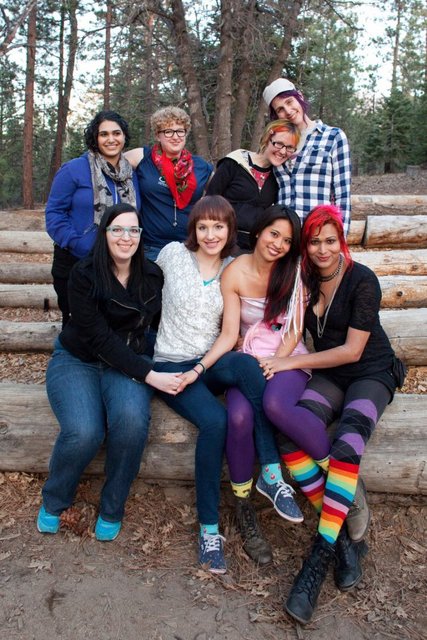
Autostraddle’s super trans*-inclusive A-Camp, April 2012
I’m so incredibly grateful for the opportunities and experiences I’ve had on here, and for the people I’ve met. Each and every one of you is part of why Autostraddle is so special. I’ve never met a community that is so open, accepting and empowered before and I’m going to miss all of your beautiful faces. So thank you, sincerely, for being such wonderful people and for helping make this trans girl feel loved and proud of who she is.
Autostraddle is currently soliciting submissions from queer-identified trans* women — read all about it here !

I'm a 23 year old femme lesbian living in SF. Once upon a time, I was a USC frat boy ;) I ♥ music so please recommend your favorite artists to me!
annika has written 21 articles for us.
MTF Transgender Transition Timeline
Transitioning is often a long and intense process. For many, the transition may take years to complete. Still, change is the only constant, and living your authentic truth is a beautiful journey. In this article, we'll talk you through details of a typical MTF transition timeline. From hormone therapy to voice training, to top and bottom surgery and everything in between!
The MTF transition journey is very a personal one, and each person decides which steps they want to undertake, and when to do it. Remember, no matter what you choose to do, you’re valid, and if for any reason something doesn’t feel right for you, it doesn’t make you any less of a woman.

Social Transition
For many people who fall under the transgender umbrella, the first step into embodying their authentic identity starts with a social transition. For transgender and non-binary people, this often begins with exploring your gender identity. For many trans people, this can be a hard first step. It’s important to remember that there are people around you that can support you through this journey, and often, speaking to a therapist that specializes in gender can help you.
The next step is coming out. This, too, can be a huge source of anxiety for a lot of people. Don’t feel any pressure to come out to everyone at once! Many people opt to come out in stages, often starting with friends and family, or wherever they feel is safest. In addition to coming out, trans people can choose to use different pronouns and names that better capture who they are. For trans women and transfeminine people, this often means using she/her pronouns in place of he/him pronouns. It’s important to respect everyone’s pronouns. In fact, it’s one of the easiest ways you can support the trans people in your life!
Along with these big steps, trans women and transfeminine people will often start expressing their gender identity outwardly, particularly through their clothing, hair, makeup, and other methods such as tucking and non-surgical breast enhancement.

Hair removal
For many trans women and transfeminine people, hair removal is considered an important part of their transition. The presence of unwanted hair on the face and the body can be distressing for many, so the need for safe and effective methods for hair removal becomes apparent. Luckily, there are a number of hair removal methods that are uniquely suited to each person’s needs and preferences!
While hormone replacement therapy (HRT) naturally helps with the hair removal process because of increased levels of estrogen in the body, it's still worth considering these alternatives, which often show fast results. Some of these methods include laser hair removal, electrolysis, waxing, shaving, and epilating creams. Each of these methods come with their own advantages and disadvantages, so it’s important to read up on which method is right for you. You can read more about the laser hair removal procedure here .
Hormone replacement therapy (HRT)
Hormone replacement therapy, or HRT for short, is a very important part of the transition process for many people under the trans umbrella, whether they be trans men, trans women, or non-binary. It’s important to remember that some changes undergone during HRT are irreversible. To get accepted for HTR, you are often required to undergo psychotherapy and receive a letter of recommendation from a therapist. This is done to ensure that you have a good understanding of what HRT is, and to ensure that HRT is right for you.
While this varies on a case-to-case basis, HRT medication for people undergoing an MTF medical transition commonly consists of a form of estrogen combined with an anti-androgen. Estrogen is the primary sex hormone responsible for the development of female secondary sex characteristics such as breast growth and a feminine fat distribution pattern. An anti-androgen is a medication that suppresses the primary male sex hormones in the body. This reduces the masculine secondary sex characteristics such as a deeper voice, broad shoulders, body and facial hair, and a masculine fat distribution pattern.
Over the course of HRT, one can expect the following changes:
- Breast development: Just as with cis women, breast growth varies greatly among people. Maximum breast growth is typically observed after two years of continuous HRT.
- Decrease in body hair: Body hair will significantly decrease or in some cases, completely vanish on the arms, legs, abdomen, chest, and shoulders. Facial hair, however, tends not to change too much over the course of HRT (but you can check out the hair removal options we outlined above).
- Skin: Many women on HRT report a change in the texture of their skin, often describing it as softer and smoother.
- Fat distribution: Over time, fat will redistribute towards the hips, thighs, and buttocks, creating a more feminine figure.
- Muscle mass: While this depends on the individual, muscle mass decreases, particularly in the upper body.
- Genitals: testes and penis size will significantly decrease, and their sexual function will be impaired. This could result in fewer erections and ejaculations (however, the ability to orgasm is not dependent on one’s ability to hold an erection or ejaculate).
- Prostate gland: The prostate gland will reduce in size, reducing or completely halting the production of semen.
Infertility: Long-term HRT often leads to permanent infertility. You can read more about it here .
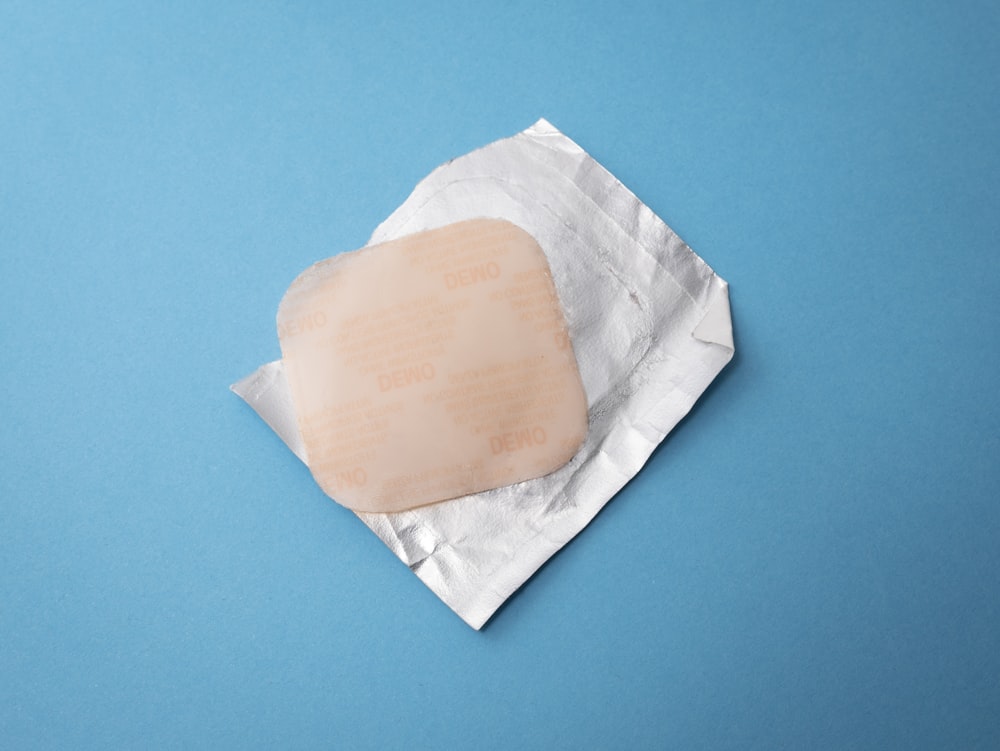
Voice training
While HRT brings about a lot of changes, MTF hormone therapy does not raise your vocal pitch. There are, however, many programs and voice training resources that can assist with voice feminization. Through voice training, one can raise the pitch of their voice. However, it’s important to remember that voice training goes far beyond raising vocal pitch. There are a number of other aspects to consider that are tackled during vocal training, such as voice inflection, word choice, body language, coughing, throat clearing, and laughter. A vocal coach, speech therapist, or specialize online programs can guide you through this process. You can learn more about Voice Feminization with Kathe Perez !
Top Surgery
Although HRT induces breast development, trans women and transfeminine individuals have no control over the size and shape of their breast growth. In such cases, breast augmentation surgery or top surgery, is a viable option.
During top surgery, an incision is made into the breast, and saline or silicone breast implants are inserted, depending on the desired result. Generally, slicone implants are firmer, with a smooth surface, resulting in a more natural look, while saline implants are rounder and more fluid-feeling.
Besides the type of implant, there are many other things to consider, from implant placement and size to incision type and location. It’s best to find a qualified surgeon that can help you make the best decision to achieve the best possible result for you!


Bottom Surgery
MTF bottom surgery is often combined with the MTF top surgery to reduce the times one has to undergo anaethesia (and pay for operating room costs). In most cases, the bottom surgery is a combination of several different procedures. First, a penectomy and orchidectomy are done to remove the male genitalia. Second, the labia, vulva, clitoris, and vagina are created using labiaplasty, vulvoplasty, clitoroplasty, vaginoplasty, respectively. Lastly, the urethra is repositioned. The exact approach may differ depending on personal preference and needs, but it's common to use the existing penile and scrotal tissue into the vagina, clitoris, and labia.
After the surgery, it's extremely important to keep consistently dilate the newly created vagina to prevent it any complications. You may use specially designed MTF dilators to do this - we have some in our shop. Generally, doctors advise to start dilating two weeks after the surgery, but it's best to discuss this with your surgeon.
Many wonder whether you can orgasm after undergoing MTF bottom surgery, and the answer is yes! Because the penile tissue is used to create the clitoris, it retains its high sensitivity, and most trans women and transfeminine people can achieve amazing orgasms through clitoral stimulation.
In many cases, the results of MTF bottom surgery is nearly indistinguishable from a cis woman's vagina . To get an idea of the results of MTF bottom surgery, you can check out this website. Be advised - this includes graphic content!
Body Feminization Surgeries (BFS)
For some trans women, HRT alone is not enough to achieve the desired feminization results. In those cases, body feminization surgery (BFS), . Body feminization surgeries (BFS) are in essence, any surgery that aims to feminize body contours to achieve one’s desired figure. These surgeries include facial reconstruction surgery to create a more feminine facial profile, liposuction, and buttock augmentation. These feminization surgeries can often be performed in addition to the procedures described above.
It's important to note that BFS is not a substitute for a healthy lifestyle. These surgeries are best performed on trans women and transfeminine individuals that are very close to their desired body shape. Ideally, they have developed adequate muscle tone and have minimal excess skin.

Keep in mind that each transition is unique. For many trans women and transfeminine people, it's difficult to start a social MTF transition before any of the other transition stages have been completed. Unfortunately, there are still places that do not provide adequate protections for trans individuals, and society at large still lacks understanding of trans people and their experiences. In some places, access to trans healthcare, including hormones and surgeries, is limited.
The transition process comes with its ups and downs, and it is extremely important to have a solid support system to help you through it. Check locally for any trans support groups in your community, and if you feel none of them are right for you, the internet is a great place to find like-minded people that share your experience. If you or someone you know is transitioning or considering transitioning, you can find great resources on our blog and on other sites across the internet. Transgender Map is a great source of information for transgender people!
As always, remember, it's what’s on the inside that counts!
Author Unknown. Hair Removal Options. [online] Gender Confirmation Center by Dr. Scott Mosser. Available at: https://www.genderconfirmation.com/hair-removal-options/
Author Unknown., 2020. MTF Breast Augmentation 101 – Everything You Need to Know. [online] MTF Surgery.net. Available at: https://www.mtfsurgery.net/mtf-breast-augmentation.htm
Author Unknown. Transfeminine Bottom Surgery. [online] University of Utah. Available at: https://healthcare.utah.edu/transgender-health/gender-affirmation-surgery/vaginoplasty.php
O’Mara M. Effects of Male to Female Hormones - HRT MTF Hormone Effects. [online]. Michelle O’Mara. Available at: https://micheleomara.com/feminizing-hrt-for-male-to-females/
Wesp L.M., Deutsch M.B., 2017. Hormonal and Surgical Treatment Options for Transgender Women and Transfeminine Spectrum Persons. Psychiatr. Clin. North Am . 40 (1): 99–111
You may also like

The #1 MtF Fashion, Beauty & Transition Blog for Transgender Women

Item added to your cart
4 key ways how to start mtf transition | guide for trans women.
If you're a transgender woman looking to begin your MtF transition, it can be an exciting yet scary time. There are many obstacles, and social pressures in the way, and being strong and steadfast is important.
We've come up with 3 essential ways that you can start your MtF transition journey. With the right resources and information, you can make your MtF journey a rewarding and beautiful experience. Here are three simple ways to get started:
1. Experiment and Explore Your Gender Expression
Before starting medical procedures, it is a good choice to experiment with your gender expression. This can include trying out different hairstyles, makeup looks, clothing /fashion styles, and accessories that make you feel more feminine. Experimenting and exploring with your gender expression can help you develop your own sense of style, while helping you to feel more comfortable presenting as a woman.

2. Find a Therapist That You Trust
Finding a therapist who specializes in transgender issues and who you trust can be an essential part of your MtF transition. A therapist can provide a safe space to explore your gender identity and help you work through any emotional challenges that may arise during the transition process.
They can also provide guidance on how to navigate relationships with family and friends, cope with discrimination, and manage anxiety or depression that may occur during this time.
When searching for a therapist, it's important to find someone who is trans friendly, listens to your concerns, and is supportive of your transition goals. This may take some time and research, but finding the right therapist can be an invaluable resource in your transition journey.
3. Connect with the Transgender Community
Connecting with the transgender community can be a valuable resource when starting your MtF transition. You can connect with other transgender women through online support groups, local transgender organizations, or attending LGBTQIA+ events in your area. Talking to other transgender women who have gone through the transition process can give you valuable insight and support as you navigate your own journey.
4. Find a Gender-Affirming Healthcare Provider
One of the first steps in your MtF transition should be finding a healthcare provider who specializes in transgender healthcare. This healthcare provider can help guide you through the medical aspects of your transition, including hormone replacement therapy (HRT), gender confirmation surgery , and other medical procedures that can help you achieve a more feminine appearance. Your healthcare provider can also provide counseling and support throughout your transition process.

Is Transition Right For Me?
Starting your MtF transition can be a life-changing experience, and it's important to remember that everyone's journey is unique. With the right support and resources, you can begin your MtF transition with confidence and find your own path to living your truth as a transgender woman.
Most Popular Shopping Picks:

MTF HRT Skin Changes: What to Expect During Hormone Replacement Therapy
BROWSE TRANS BEAUTY:
Beauty | hairstyle | fashion | hair removal | tucking guide | curves | transition, leave a comment.
Please note, comments need to be approved before they are published.
STAY IN THE KNOW.
Be the first to know about new MtF beauty products, fashion, and lifestyle tips. Delivered straight to your inbox.
- Choosing a selection results in a full page refresh.
- Opens in a new window.
- PRO Courses Guides New Tech Help Pro Expert Videos About wikiHow Pro Upgrade Sign In
- EDIT Edit this Article
- EXPLORE Tech Help Pro About Us Random Article Quizzes Request a New Article Community Dashboard This Or That Game Popular Categories Arts and Entertainment Artwork Books Movies Computers and Electronics Computers Phone Skills Technology Hacks Health Men's Health Mental Health Women's Health Relationships Dating Love Relationship Issues Hobbies and Crafts Crafts Drawing Games Education & Communication Communication Skills Personal Development Studying Personal Care and Style Fashion Hair Care Personal Hygiene Youth Personal Care School Stuff Dating All Categories Arts and Entertainment Finance and Business Home and Garden Relationship Quizzes Cars & Other Vehicles Food and Entertaining Personal Care and Style Sports and Fitness Computers and Electronics Health Pets and Animals Travel Education & Communication Hobbies and Crafts Philosophy and Religion Work World Family Life Holidays and Traditions Relationships Youth
- Browse Articles
- Learn Something New
- Quizzes Hot
- This Or That Game
- Train Your Brain
- Explore More
- Support wikiHow
- About wikiHow
- Log in / Sign up
- Relationships
- Gender Expression
How to Become a Woman: Male to Female Transition
Last Updated: April 25, 2024 Fact Checked
Hormone Therapy
Surgical treatments, social transitioning.
This article was co-authored by Inge Hansen, PsyD and by wikiHow staff writer, Danielle Blinka, MA, MPA . Dr. Inge Hansen, PsyD, is the Director of Well-Being at Stanford University and the Weiland Health Initiative. Dr. Hansen has professional interests in social justice and gender and sexual diversity. She earned her PsyD from the California School of Professional Psychology with specialized training in the area of gender and sexual identity. She is the co-author of The Ethical Sellout: Maintaining Your Integrity in the Age of Compromise. There are 26 references cited in this article, which can be found at the bottom of the page. This article has been fact-checked, ensuring the accuracy of any cited facts and confirming the authority of its sources. This article has been viewed 1,486,707 times.
You’re ready to finally step out into the world as a woman, and we’re here for it. Your transition from male to female may take years to complete, but you can achieve big changes in just a few months. We’ll guide you through all the steps of mtf transition, and we’ll help you decide which ones are right for you. What are you waiting for? Let’s get started!
What to Expect When You Begin Female Hormones
Hormone therapy often begins with testosterone blockers, like spironolactone, then moves on to estrogen. The medications change your skin, body shape, hair growth, and sex drive. The changes can start in as soon as 3 weeks.

- If your insurance requires pre-authorization, ask your doctor to fill out the template, then send it into your insurance.
- If you get insurance through work or school, you may need to ask your employer or school to remove exclusions against transgender treatments before you can get coverage. [2] X Research source Send this letter to your employer or school if you need to get your medical treatments added to your insurance benefits.

- At your appointment, talk to your doctor about your health history and your fertility concerns.
- Your doctor will explain all of your options to you to help you pick the right treatments for you.
- Medically speaking, you can start hormone therapy as young as 16 years old. [4] X Trustworthy Source Cleveland Clinic Educational website from one of the world's leading hospitals Go to source

- This process is called sperm cryopreservation. It’s a super easy process where you masturbate to produce sperm. After that, you’ll pay about $100 to $500 a year to keep your sperm frozen. [9] X Trustworthy Source Johns Hopkins Medicine Official resource database of the world-leading Johns Hopkins Hospital Go to source

- There are some risks to HRT, including blood clots, gallstones, weight gain, elevated liver enzymes, heart problems, high triglycerides, high blood pressure, and diabetes. [12] X Research source

- Most therapists include their specialties on their websites, so look for a therapist who lists LGBTQ+ issues as a treatment option.

- You can check board certification here .
- TransHealthCare.Org has a database of gender affirming surgeons that makes it easy to find a reputable surgeon near you.

- This procedure usually costs around $7,000 and is usually not covered by insurance because it’s not medically necessary.
- It takes about 6 months to recover from voice feminization surgery. [16] X Research source
- The main side effects of vocal feminization surgery are the shortening of your airways, which can make it harder to take deep breaths. [17] X Trustworthy Source Mayo Clinic Educational website from one of the world's leading hospitals Go to source

- A tracheal shave typically costs between $3,000 and $4,000, and it’s usually not covered by insurance.
- Your swelling will improve after about 3-4 weeks, but it usually takes about a year to see your final result. [19] X Research source
- You don’t really need a tracheal shave to be a woman, but it might make you feel more confident.
- You could experience some side effects, including swelling, bruising, scarring, infection, voice changes, and changes in swallowing. [20] X Research source

- Some insurance companies will cover facial feminization, but it’s usually not medically necessary. Without insurance, it starts at around $8,500 but often costs more.
- It usually takes 2-3 weeks to recover from this surgery. [22] X Research source
- Hormone Replacement Therapy (HRT) generally facilitates around 70% of the feminization process. However, due to the aggressive impact of testosterone on the facial bones, surgical intervention may be advisable to reverse features such as a prominent brow bone, closely positioned eyebrows, and a strong jawline. Although some women naturally have these features, transgender women often face greater challenges to pass as female after exposure to testosterone.

- Breast augmentations are usually covered by your insurance, as long as your doctor confirms it’s for gender-affirming care. If you don’t have insurance, it starts at around $2,000 but could be higher.
- After top surgery, you may experience pain for 4 to 5 days, and it’ll take 2-3 weeks before you’ll be able to lift your arms more than 90 degrees. [24] X Trustworthy Source Johns Hopkins Medicine Official resource database of the world-leading Johns Hopkins Hospital Go to source
- Although the procedure is generally safe, no surgery is without risk. After a breast augmentation, you might experience discomfort, scar tissue, changes in nipple and breast sensation, infection, changes in implant position, or implant leakage or rupture. [25] X Trustworthy Source Mayo Clinic Educational website from one of the world's leading hospitals Go to source

- An orchiectomy is typically covered by insurance. Out of pocket, it usually costs between $5,000 and $8,500.
- It takes 2 to 3 weeks to recover from an orchiectomy. [27] X Research source
- While it’s generally a safe procedure, you might experience some side effects. These include low sex drive, low muscle mass, fatigue, depression, hot flashes, erectile dysfunction, and osteoporosis. [28] X Trustworthy Source Cleveland Clinic Educational website from one of the world's leading hospitals Go to source

- Fortunately, a vaginoplasty is typically covered by insurance. If you pay out of pocket, it usually costs between $6,000 and $9,000.
- It’ll take about 3 months for you to fully recover from your vaginoplasty.
- There are a few risks to having vaginoplasty. You might experience nerve damage, vaginal stenosis, a short vaginal length, or a fistula. Additionally, you might not like the appearance of your new vagina. [30] X Trustworthy Source Cleveland Clinic Educational website from one of the world's leading hospitals Go to source

- “I have something I’ve been wanting to talk about. You might have noticed how I’m really into fashion and love hanging with the girls. That’s because I’m really a girl, and I’m ready to start my transition.”
- “I feel like I can really trust you, so I wanted to tell you something really personal. For a long time, I’ve known that I’m really a woman. Now, I’m ready to start presenting my true self to the world, and I hope you’ll be there for me as I transition.”

- Spend more time with the people who already accept you so that you have support.
- Sometimes, people just need time to think. You might be surprised by how supportive your friends and family become after they’ve had time to process everything.

- If you’re still in school, see if there are any clubs for LGBTQ+ folks and their allies.
- Try meetup.com for groups that meet in your area.

- Sometimes your chosen family is more important than the one you were born into.
- Losing friends is painful, but you’ll make new friends as you transition. Best of all, these new friends are going to love you as you are.

- If you start a new job after your transition, you don’t have to tell anyone that you’re trans unless you just want them to know.
- If your deadname is still your legal name, HR will need it for payroll and taxes, but they’re supposed to keep that confidential.

- Gender neutral names like Alex, Sam, Taylor, Blair, and Harper might be comfortable if you’re more androgynous.

- “Hi, I’m Amy, and I use she/her pronouns.”
- “I’m Alex, and my pronouns are she/her/they/them.”
- “Actually, it’s ‘she’.”
- “It sounded like you said, ‘he’. My pronouns are she/her.”

- Look at what girls or women your age are wearing to get inspiration for your own looks.
- Wearing a padded bra can help you have a curvier figure.

- If you prefer short hair, you might get a pixie cut or bob.
- If you’re growing out your hair, bangs or layers can make your style look more feminine.

- Opt for matte foundation and powder because they’ll create a more even texture.
- Apply peach or orange concealer on dark spots and over your beard shadow.
- Use highlighter under your eyebrows and on the sides of your nose for rounder features.
- Pick a shimmery blush to add a little glow to your skin.
- Blend an eyeshadow the same color as your hair around your hairline to round it out.

- Try these free voice exercises to help feminize your voice!
- Altering your voice takes patience and practice. It could take years to get the tone and pitch you want, but you’ll definitely see changes along the way.

- If you live in the U.S., LGBT MAP can tell you the policies in your area.
- If you can’t afford to change your name, the Transgender Legal Defense & Education Fund may be able to help. They provide free legal assistance to low-income trans and non-binary folx.
Navigate Your Gender Transition with this Expert Series

Expert Q&A
- You can transition at any age, and it’s never too late to be yourself. Even as an adult, you can transition and look amazing! Thanks Helpful 6 Not Helpful 0
- Express who you are, rather than trying to live up to societal expectations. There are so many ways to be a woman! Thanks Helpful 4 Not Helpful 0
- It’s normal to feel discomfort when your breasts start changing. Take good care of yourself by eating well, drinking lots of water, and resting while your body is developing. Thanks Helpful 2 Not Helpful 0
Tips from our Readers
- Read up about other people's transitions and their timelines to help reassure yourself. Everybody goes at a different pace.

- Talk to your doctor before you stop HRT. In some cases, starting and stopping can damage your endocrine system. Thanks Helpful 33 Not Helpful 7
You Might Also Like

- ↑ https://transequality.org/health-coverage-guide
- ↑ https://transequality.org/health-coverage-guide/determining-your-insurance-type
- ↑ https://www.mayoclinic.org/tests-procedures/feminizing-hormone-therapy/about/pac-20385096
- ↑ https://my.clevelandclinic.org/health/treatments/21653-feminizing-hormone-therapy
- ↑ https://www.center4research.org/what-to-know-about-transgender-medical-transitioning-male-to-female/
- ↑ Inge Hansen, PsyD. Clinical Psychologist. Expert Interview. 19 November 2019.
- ↑ https://www.hopkinsmedicine.org/health/treatment-tests-and-therapies/sperm-banking
- ↑ https://www.ncbi.nlm.nih.gov/pmc/articles/PMC5182227/
- ↑ https://www.uofmhealth.org/conditions-treatments/transgender-services/gender-confirmation-surgery
- ↑ https://www.mountsinai.org/locations/center-transgender-medicine-surgery/care/surgery/male-to-female
- ↑ https://www.mountsinai.org/locations/grabscheid-voice-swallowing-center/our-services/transgender-voice-feminization
- ↑ https://www.mayoclinic.org/tests-procedures/transgender-voice-therapy-and-surgery/about/pac-20470545
- ↑ https://wexnermedical.osu.edu/gender-affirming-care/surgery-options/facial-surgeries/tracheal-shave
- ↑ https://www.hopkinsmedicine.org/health/treatment-tests-and-therapies/top-surgery
- ↑ https://www.mayoclinic.org/tests-procedures/breast-augmentation/about/pac-20393178
- ↑ https://my.clevelandclinic.org/health/treatments/21467-orchiectomy
- ↑ https://my.clevelandclinic.org/health/treatments/21572-vaginoplasty
- ↑ https://www.chop.edu/health-resources/coming-out-parents-and-friends-transgender
- ↑ https://www.ohio.edu/sites/default/files/sites/lgbt/Coming-Out-As-Trans.pdf
- ↑ https://www.pewresearch.org/social-trends/2013/06/13/chapter-3-the-coming-out-experience/
- ↑ https://www.bath.ac.uk/guides/coming-out-as-trans/
- ↑ https://www.hrc.org/resources/transitioning-in-the-workplace-a-guide-for-trans-employees
- ↑ https://www.glsen.org/sites/default/files/GLSEN%20Pronouns%20Resource.pdf
- ↑ https://myhealth.alberta.ca/Alberta/Pages/gender-ID-expression-LGBTQ.aspx
- ↑ https://www.marieclaire.com/beauty/a12797879/transgender-makeup-tips/
- ↑ https://www.lgbtmap.org/equality-maps/identity_document_laws
About This Article

To transition from a male to a female, start by seeing a therapist to get a diagnosis for gender dysphoria, which you will need for any medical procedures. You'll also need to live as a woman for 1-2 years before your doctor will approve surgery. Regardless of whether you want any medical procedures, you can start dressing in female clothes and presenting yourself as a woman in public, which will help you feel more comfortable in your body. At this point, you can also work with a speech therapist or watch content online to help you perfect your female voice. When you’re ready to start physically transitioning, talk to your doctor, who will prescribe hormone replacement therapy. If after a year or 2, you decide to have any surgical treatments, talk to your doctor, who will help you schedule a treatment plan. For more tips, including how to legally change your gender, read on! Did this summary help you? Yes No
- Send fan mail to authors
Reader Success Stories
Bree Oillics
Jul 13, 2017
Did this article help you?

Aug 3, 2017
Emily Iannielli
Aug 9, 2017
Jennifer Louise Byrne
Oct 2, 2017

Featured Articles

Trending Articles

Watch Articles

- Terms of Use
- Privacy Policy
- Do Not Sell or Share My Info
- Not Selling Info
Get wikiHow's expert advice in our new
Weekly Relationships Newsletter
- Newsletter Signup
- Search for:

- Hormonal Balance
- Breast Enhancement
- All Ingredients
- Testimonials
- Breast Health
- PMS Symptoms
- Breast Feeding
- M to F Transition
- Male to Female Transition
No products in the cart.
Home » Blog » M to F Transition » 4 MTF Transitions You’ll Hardly Believe Are Real
4 MTF Transitions You’ll Hardly Believe Are Real
The MTF transition is a journey different for each individual but all trans women share the anticipation of loving and feeling confident in their bodies.
The three commonly used methods for MTF transition are:
- Gender affirmation procedures
- Hormone replacement therapy
- Natural breast enhancement supplements
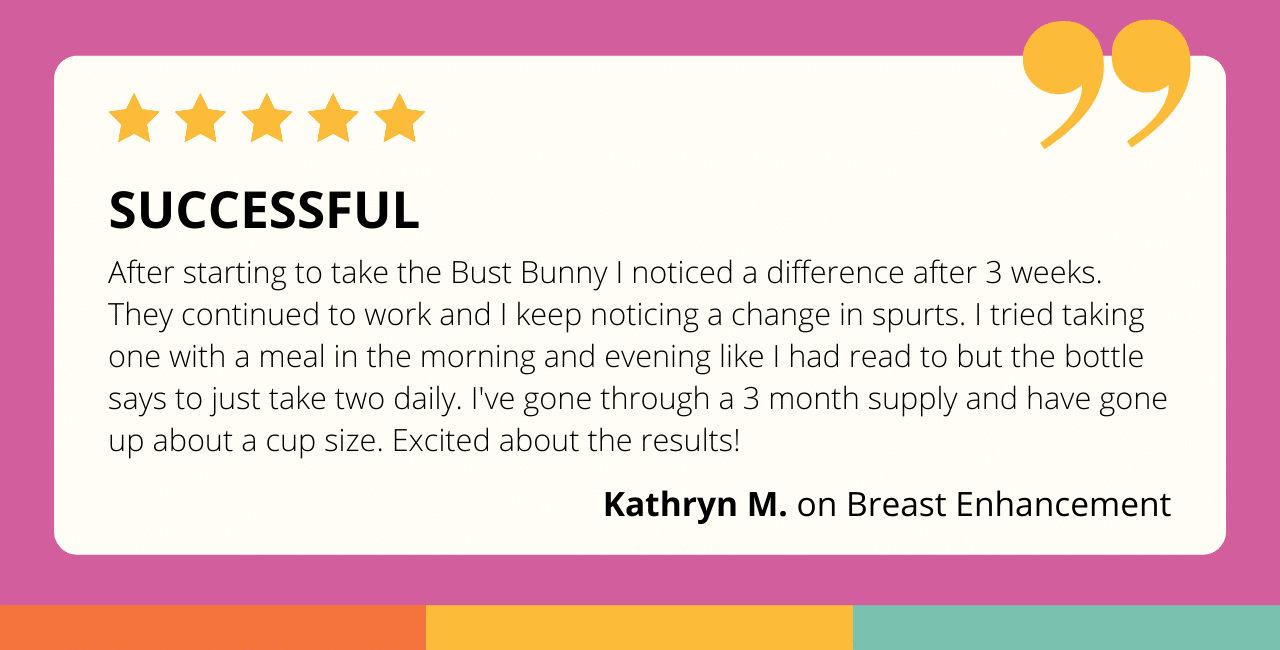
Any of these three methods can help you achieve your dream body. Of course, some are more accessible and affordable than others and their effectiveness varies based on several factors, including age and genetics.
But being in a body you love and are proud of can catapult you to the heights of success, with many examples of MTFs who broke barriers in their careers after they transitioned.
We’d like to take you through four hard-to-believe MTF transitions boasting enviable bodies and career success.
Table of Contents
1 – Valentina Sampaio: Celebrated Transgender Supermodel

Valentina Sampaio is a celebrated transgender model born in a remote fishing village in Brazil in 1996.
She says she knew she was transgender by age 8 and started her social transition at 12 by calling herself Valentina.

She grew up in a supportive family and society, which empowered and helped her to have a fruitful experience as a transgender teen at school and find dignified work as an adult.
Sampaio’s journey as a model has been marked by several rewarding firsts for herself and the transgender community, including:
- Being the first openly transgender model to be featured on the cover of Paris Vogue in March 2017
- Being Victoria’s Secret’s first transgender model in 2019
- Appearing in Sports Illustrated’s Swimsuit Issue in 2020 as the first transgender woman
Sampaio also appeared on the covers of Brazilian and German Vogue in 2017.
She proudly uses her platform to promote diversity and encourages the fashion industry to continue bringing together “a diverse set of multitalented, beautiful women in a creative and dignified way.”
2 – Nomi Ruiz: Lead Actor in New Action-drama Film Haymaker

Nomi Ruiz is a beautiful American transgender singer, writer, and actress who’s performed on many prestigious stages as the lead vocalist of the Brookly-based band, Jessica 6. Her journey started when she was 8 years old when she realized she liked boys, and thought she was gay.
Ruiz started venturing out as a gay boy at 13 but soon realized that she wasn’t gay but transgender. Not long after, she began pursuing her MTF transition.
We couldn’t find photos of Ruiz before her transition, but her body and success post-transition are truly enviable.
She is currently celebrating the release of her debut feature film, the action drama Haymaker. The movie is a post-MTF transition love story between Nomi (whose character is also called Nomi) and her bodyguard, an ex-Muay Thai fighter named Nick.
Nomi accepted this role after turning many others down because of how close it is to her personal experiences.
Here is a sneak peek into the film, released on January 29th, 2022.
3 – Kataluna Enriquez: Miss Nevada USA 2021

Kataluna Enriquez is a transgender woman of color who describes herself as “a minority within a minority—I’m everything that our country doesn’t represent.”
Enriquez shares on Yahoo that she was always very feminine and not like other kids since she was very young.
She didn’t quite get it but eventually realized she was trans and started transitioning socially at 14. Her transition brought about bullying, abuse, and discrimination when she was in high school, but that didn’t stop her from pursuing her medical transition right after graduation.
Enriquez had a keen interest in pageantry from a young age and started competing in transgender pageants in 2015 and cisgender pageants in 2020.

She has earned several accolades as a model, including:
- Being crowned Queen California, Queen USA 2016
- Being crowned Super Sireyna WWUSA
- Winning the Miss Silver State USA pageant in March 2021
- Being the first openly transgender woman to be crowned Miss Nevada USA in June 2021
- Being the first woman to compete in the Miss USA pageant in November 2021
Miss Enriquez is an advocate for inclusivity, diversity, and support for LGBTQIA+ youth. She promotes the hashtag #BEVISIBLE on her social media, which is a campaign against hate.
4 – Jazz Jennings: 20-year-old Trans Girl and LGBTQIA+ Activist

For some transgender people the revelation that they are in the wrong body comes much earlier. Jazz Jennings realized she was a girl trapped in a boy’s body as soon as she could form coherent thoughts.
She was adamant about dressing like a girl and playing with “girls’ ” toys since she was a toddler, so her parents took her to a child psychologist at the age of 3 who diagnosed her with gender dysphoria—then referred to as gender identity disorder.
The diagnosis was a turning point for her and her family. She started her transition two years later when moving from Pre-K to Kindergarten.
Jennings’ well-documented MTF transition journey has involved several procedures during the past two decades.
Unfortunately, her last procedure was accompanied by complications and had to undergo two corrective procedures after which she showed her scars on Instagram and said “I’m proud of my scars and I love my body just the way it is.”

Jazz has been very open about her MTF transition journey. She has shared her story via:
- Her TLC reality show, I am Jazz
- Two books she authored; one a children’s book, I am Jazz , co-authored with Jessica Herthel and another, My Life as a (Transgender) Teen
Frequently Asked Questions
What is the best method of mtf transition.
Natural is always best. It spares you the negative side effects and risks associated with medical procedures and synthetic hormones.
For instance, hormone replacement therapy is known to bring about the following side effects:
- Weight gain
- Leg cramps
Natural breast enhancement supplements can also help you achieve your desired body without negative side effects.
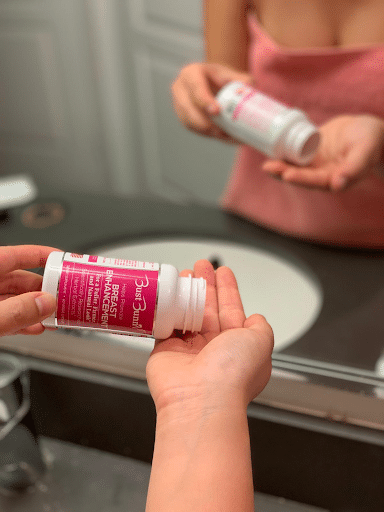
At Bust Bunny, we manufacture breast enhancement supplements from all-natural ingredients and phytoestrogenic herbs to help trans and non-binary women achieve fuller and firmer breasts, body fat redistribution, softer skin, and other feminine traits.
Our customers are proud to attest to the safety and effectiveness of our products:
This product is working for me! I am a non-binary AMAB and want a more feminine body. After about 2 1/2 months I am seeing some additional plumpness in my chest, and I have no doubt that I will soon have small breasts of my very own. — William
Can I combine methods of MTF transition?
For example, you can use natural breast enhancement supplements alongside HRT or after being on HRT for some time. However, you need to consult a doctor first so that they can prescribe the proper dose.
How long does it take to achieve full MTF transition changes?
The timeline for MTF transition varies based on the person and method of transition.
For example, when using Bust Bunny’s breast enhancement supplements, you can expect to notice changes within 3–4weeks and experience permanent results within 3–6 months.
Niomi happily recommends our product, having achieved firmer and evener breasts within a week of taking the supplements.
On the other hand, people on HRT start experiencing changes in 1–3 months and may take between 2–5 years to achieve maximum change.
How Bust Bunny Breast Enhancement Supplements Can Help With Your MTF Transition

Bust Bunny’s Breast Enhancement supplements accelerate breast tissue formation naturally without harmful substances or invasive procedures.
Our products have helped thousands of people, including transgender women and non-binary individuals, achieve a fuller bosom, curvier hips, softer skin, better sleep, and improved moods.
Get your first bottle today and join the thousands of customers who agree that it’s the best decision they’ve made.
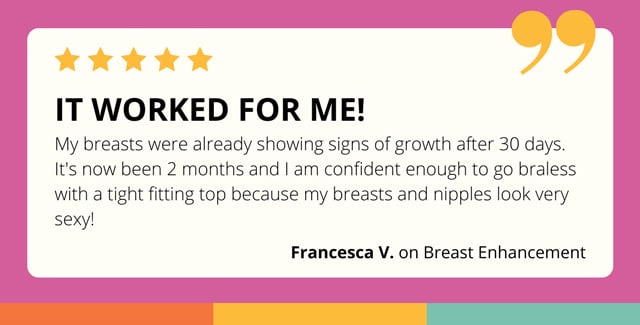
Share on Instagram:

Share on Facebook:

I have dedicated my life to Health & Fitness since the age of 18. With a background in BioChem, I have combined my love of science with health & beauty interests to offer advice, discussions, and education on how to achieve better hormonal balance, sleep easier, reduce anxiety, and feel better about yourself, inside and out. Join the discussion on Facebook - Co-Owner and President of Bust Bunny

Learn more about our loyalty program.


IMAGES
VIDEO
COMMENTS
My name is Victoria. I'm 40-something years old, and this is my story about my MTF transition after 40. While the journey to my true self wasn't easy, the end result proved to be well worth it. *Please note: We use terminology like AMAB (assigned male at birth), MtF (male-to-female), and trans-feminine interchangeably for understanding across all age groups, cultures, genders, and identities.
Medical Transition Milestones: What to Expect Throughout Your MTF Journey. Get ready to learn about the important milestones you can expect during your journey toward aligning your physical characteristics with your true gender identity as a transgender woman. For example, Sarah, a 28-year-old transgender woman, has been taking hormone therapy ...
And toward the end of the series, there's a few images where I think: 'This is me, as I am. I have zero regrets.'. Allison Lippy is a Brooklyn-based photographer whose work explores the ...
This video shows the timeline of my life and the various changes as I transition. Being transgender is amazing adventure and these are just a few snapshots. ...
My Transgender Journey. A (transgender/gender) transition can be exciting but certainly fraught with many challenges for anyone, at any age. Transitioning involves a healthy dose of introspection; it often requires one to learn self-acceptance, to reconcile one's sexuality, and to understand more fully the gender that one is transitioning to ...
MB: Totally. I feel like I remember, like, me, you, and Molly, like, I don't know. [ laughs I feel like there were times that I would just, like, walk up to Molly and she would just, like, [ laughs] start crying out of nowhere in, like, physics or whatever. I don't know, but I—yeah, I love, I love to cry.
Preparing for your MtF journey. Which leads us to the starting point. Like any good journey, the first, and most important step of any MtF transition is the planning. In the same way you wouldn't set off into the jungle without some basic equipment and skills, you'll want to spend some time preparing the things you'll need, and need to ...
My goal is to empower you to make informed decisions, embrace self-acceptance, and ultimately embark on a journey that leads to a more authentic and fulfilling life. Understanding Gender Transition. Gender transition is a multifaceted process that involves aligning one's gender expression, identity, and physical characteristics with your true ...
the skin may become drier and thinner. the skin may be more sensitive to pain and temperature. development of breast tissue. fat distribution around the hips and thighs. body and facial hair may ...
Through my eyes: Living as a woman of transgender experience. In the United States, 71% of the population have never knowingly interacted with a transgender person, or, as I like to say, a ...
I'm not done on my journey yet, not by a long shot but here's where I started and where I am now.If your trans yourself but know one knows, stay strong, stay...
My first transgender client, Male To Female, or MTF, came to me ten years ago. ... There's more to the journey, that I will detail in later articles. If you are among my transgender followers or ...
8. Save money. Transitioning is really expensive. Currently only a handful of insurance companies offer trans*-inclusive healthcare benefits, which means that many people have to pay for ...
Hormonal and Surgical Treatment Options for Transgender Women and Transfeminine Spectrum Persons. Psychiatr. Clin. North Am. 40 (1): 99-111. Back to BLOG. Transitioning is often a long and intense process and often takes years. In this blog post, we'll talk you through details of a typical MTF transition timeline.
When Massachusetts twins Caleb and Emmie Smith were born in 1998, it was hard to tell them apart. At 17 Emmie came out as transgender, and recently she under...
With the right resources and information, you can make your MtF journey a rewarding and beautiful experience. Here are three simple ways to get started: 1. Experiment and Explore Your Gender Expression. Before starting medical procedures, it is a good choice to experiment with your gender expression.
Transitioning can be a long and ongoing process, or it can happen over a short period of time. You might try out different things as you learn what's best for you. The transition process is about becoming more fully yourself — in body, mind, and relationships. So, people sometimes call transitioning "congruence.".
Talk to your doctor about freezing some of your sperm so that you can have a child when and if you're ready. [8] This process is called sperm cryopreservation. It's a super easy process where you masturbate to produce sperm. After that, you'll pay about $100 to $500 a year to keep your sperm frozen. [9] 5.
4 MTF Transitions You'll Hardly Believe Are Real. The MTF transition is a journey different for each individual but all trans women share the anticipation of loving and feeling confident in their bodies. The three commonly used methods for MTF transition are: Gender affirmation procedures. Hormone replacement therapy.
This is a repost of my first slide from over a year ago. Just wanted to repost it to help keep awareness and help anyone that it may. I am a MTF Transgender ...
I pieced together photographs from pre HRT and the last 6 months since cracking my transgender egg.My Patreon: https://www.patreon.com/meltheburrowMy GoFundM...